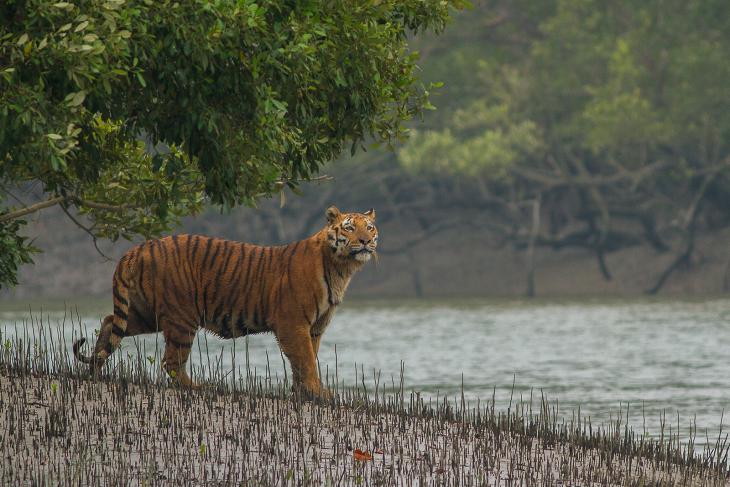
Saluting Mangroves on International Day for Biological Diversity
May 21, 2022
Today it’s International Day for Biological Diversity – a day to think about the importance of biodiversity to the natural world – and to us humans.
Biodiversity is an important subject for us at ASC – and our standards help to protect it in a number of ways. Our Salmon Standard, for example, requires that farmers focus on the wider area in which their farms are located: they must cooperate with other farms if necessary to produce an Area-Based Management (ABM) scheme to monitor and mitigate risks related to parasites and pathogens, disease management, sea lice, and protect biodiversity. Collaboration like this is essential to protect biodiversity.
ASC standards also require the responsible sourcing of feed used by farms. This covers not only the wild-caught fishmeal or fish oil that may be used in feed, but also some land-based crops – which actually make up the majority of the feed used by the aquaculture industry. Our upcoming Feed Standard strengthens these requirements even further by covering all ingredients comprising over 1% of the feed. Feed ingredients can include palm oil, soy, and rice, and the Feed Standard will require certified farms to only use certified feed – meaning all these ingredients come from responsible sources. Producing these crops in a sustainable and responsible way is a big part of the fight to protect biodiversity.

But to celebrate this year’s Day for Biological Diversity we’d like to focus particularly on one species that plays a crucial role in creating ecosystems that are absolutely vital to biodiversity, and on top of that are just genuinely fascinating: mangroves. Mangroves often occur in areas where shrimp are farmed, and for that reason there are specific protections in the ASC Shrimp Standard prohibiting their removal, or in some cases requiring their replanting.
Why are mangroves so impressive, and so important? Here are a few interesting facts…
Mangroves are tough
Anyone who’s tried and failed to keep a houseplant alive will know that some plantlife can be extremely sensitive to their surroundings. Not mangroves: they grow where a lot of trees wouldn’t. They grow in coastal water, meaning their roots are surrounded by salty water and mud with very little oxygen. Different species are adapted to different conditions, with some able to withstand not just seawater but water which has been concentrated by evaporation to be twice as salty as seawater.

Mangroves are excellent carbon scrubbers
Mangroves are very effective at removing carbon from the atmosphere, and a 2011 study in Nature Geoscience found that mangrove forests are removing up to four times as much carbon as other tropical forests. Other studies have also suggested that these forests contain a huge amount of carbon – which of course is released back into the atmosphere if the forests are removed. That’s just one of the reasons it’s so important to protect and recover these ecosystems.
Mangroves protect the coastline
Mangrove forests create huge root systems, and these actually slow down the tidal water flowing in and out every day. This can be especially important during storm surges and tsunamis, as the mangrove roots help to dissipate the wave energy. But the roots play an important role on a daily basis, as the slowed down water deposits more sediments as it flows through the roots, helping to maintain and build the coastline.

A lot of creatures call mangrove forests home
Perhaps most importantly when it comes to biodiversity, the mangrove roots create an environment in which a huge variety of organisms thrive, and their leaves form the basis of a complex food web. The roots play host to algae, oysters and sponges, while shrimps, crabs and lobsters can often be found in the mud of a mangrove forest. These animals in turn are preyed upon by larger predators including herons, kingfishers, and monkeys. That’s not all – in the Sundarbans mangrove forest in India and Bangladesh you can even find bengal tigers. Unfortunately, these big cats are under threat as their habitat is shrinking thanks to rising sea levels – a sad reminder of how interconnected environmental issues are.
That interconnectedness means that of course mangrove forests are just one small part in the global biodiversity picture, but they are hugely important nonetheless. At ASC our standards are developed to look holistically at both the environmental and social impacts of farms, wherever they’re located. If you have a newfound admiration for mangroves, or just care about protecting the world’s biodiversity and want to help, it can be hard to know where to start. There is plenty of useful information on the UN’s website for biological diversity, and of course if you want to make a difference you can look for the ASC logo and reward ASC certified farmers who work hard to minimise their impacts on the ecosystems that we all rely on.



